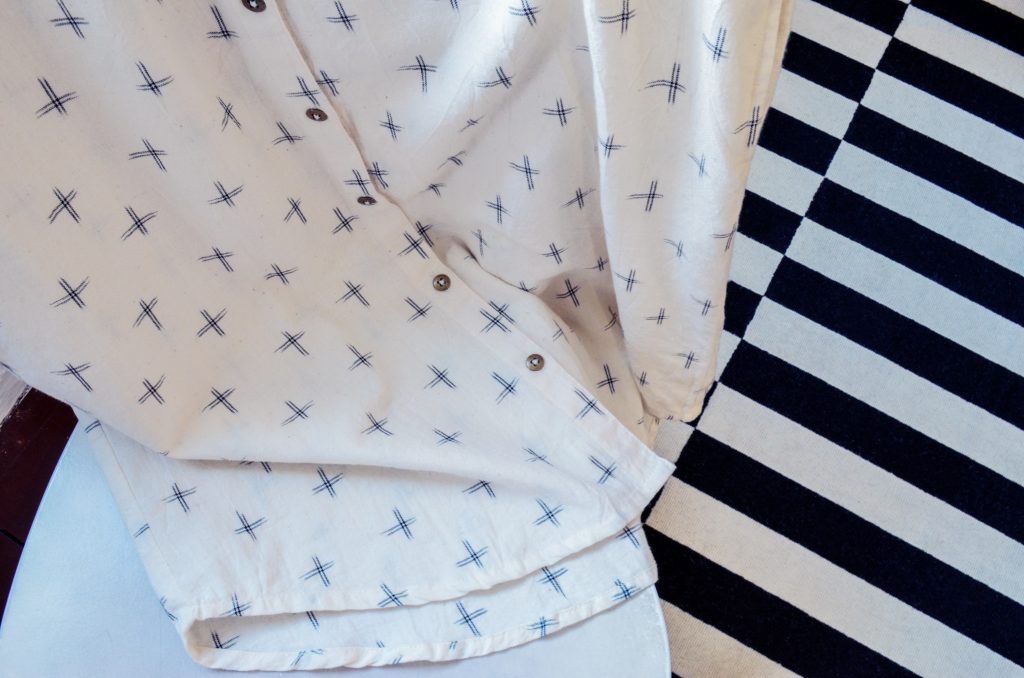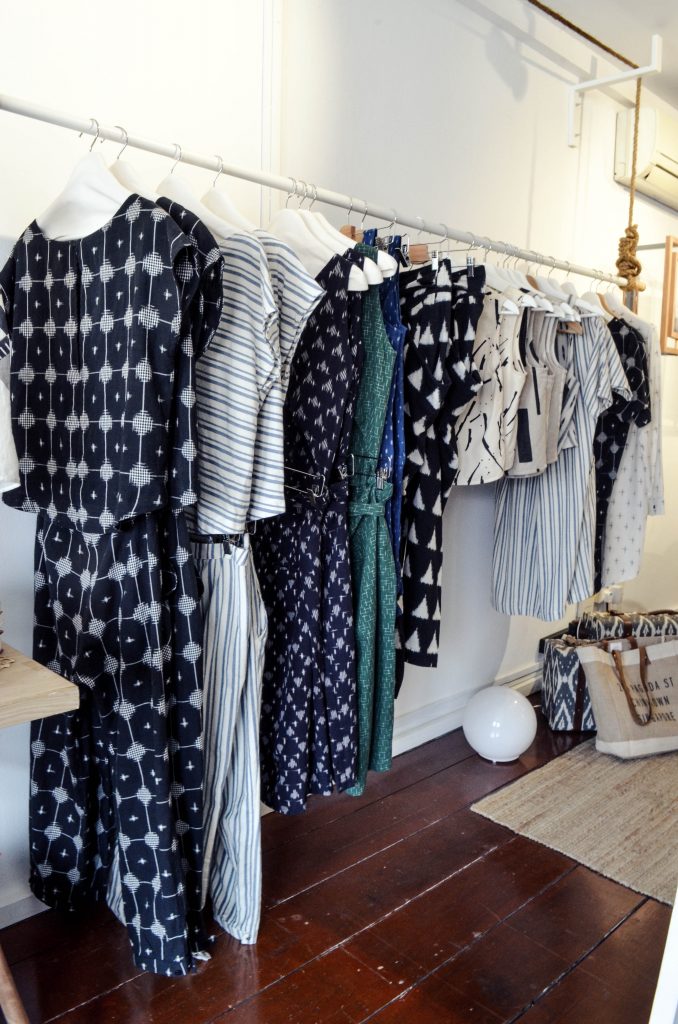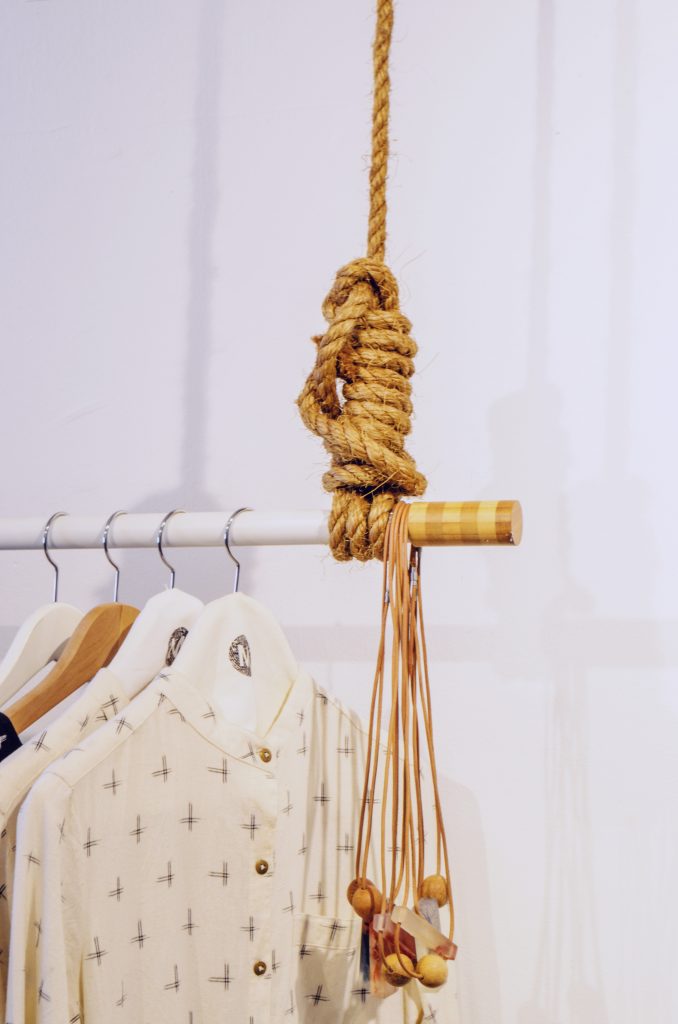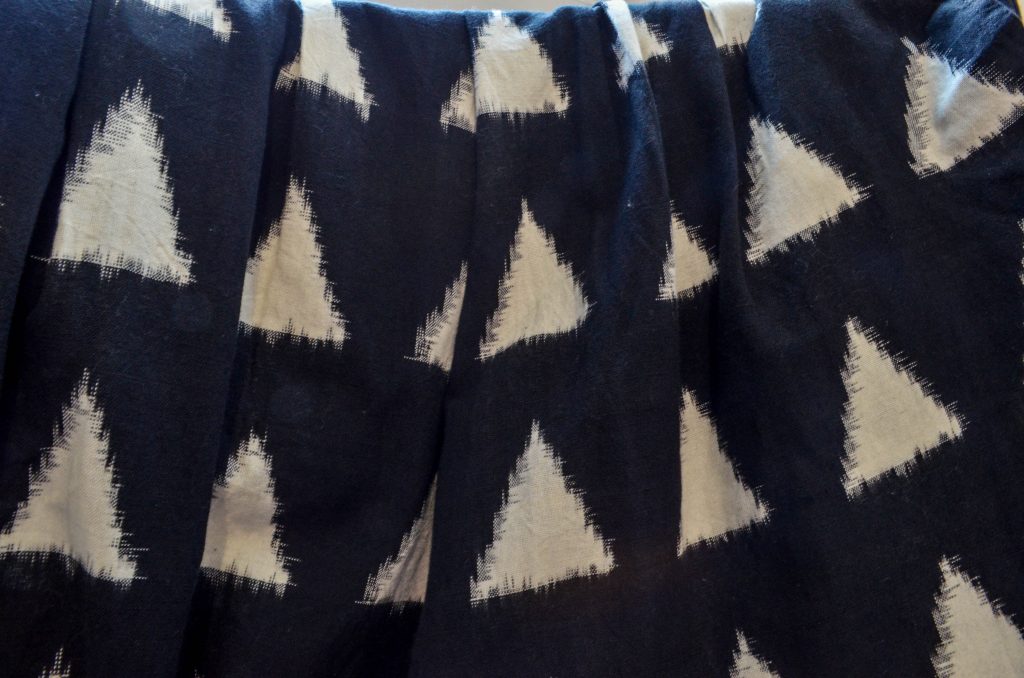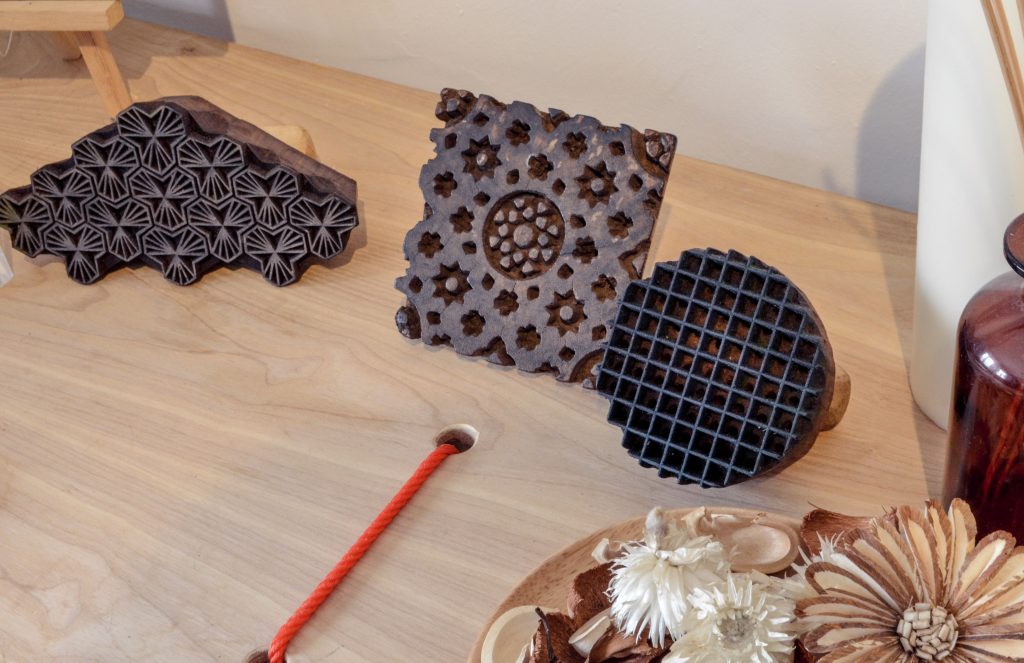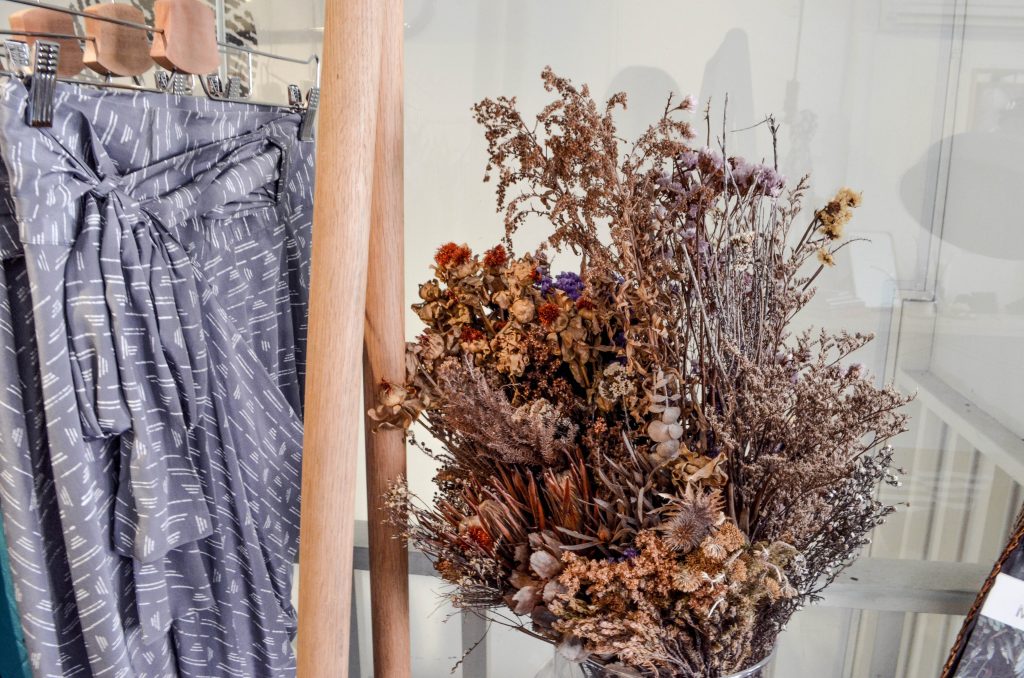The Sisterhood of the Matter Pants
Matter Prints is one of your brands that you feel proud of for making it and leading other ethical brands by example. We met up for a chat with Devonne and Farisia from the team behind Matter Prints, Singapore’s internationally successful artisanal brand, to discuss heritage and modernity. They have managed to break stereotypes about heritage craft, and permeated the wardrobes of many a globetrotter. Their loyal instagram community shares their love of travel stories, culture and sustainability, not forgetting their penchant for block printed trousers. These block printed trousers have travelled everywhere, but not lost their soul in the process. Read on to find out more about what makes Matter Prints the brand of choice for today’s nomads.
How did you end up working at Matter Prints and why was this a brand you wanted to work with?
Farisia: I started working here as a freelance photographer first. I moved to Singapore two years ago, the summer before my move I was in Vancouver where I was exposed to a lot of the local brands who aligned themselves with values like craft and sustainability. I wanted to look for similar brands in Singapore who valued the same things and I heard about MATTER from a friend. After I got my degree, I knew I wanted to continue working with them still. We live in a culture where people are paying more attention to sustainable brands, they’re care about the where, who, and why – and that’s something I want to stand behind.
Devonne: For me it also happened when I moved back to Singapore, I was looking for jobs and I came across MATTER. I loved that the brand stood strong on two pillars of sustainability and culture, both things that I was passionate about. From there on everything connected, after a bit of googling, I realized I had two other friends who knew of the brand, and so I wrote in and joined the team. I loved everything that MATTER was about and I just wanted to be involved.
I think it’s definitely a game changing brand, especially in Singapore. I feel like once this came, everyone started getting the sense that these are actually wearable clothes, this is something people wanna get on board with. I feel like Matter prints is a textile focused brand, do you know a lot about the textiles?
Devonne: You eventually do. You start by knowing almost nothing. We are definitely very textile focused, from the technique used, the print, to the people involved, every detail of the process is a story worth telling.
Are all your fabrics handloom fabrics or how are they made?
Devonne: The type of textiles used can be broken down into two parts. One, when the fabric is already made, the print and the colourway is then overlay on top of the fabrics. The other type is where the process of making the textile is a technique in itself. To explain a little more, handloom and ikat would fit into the latter category, as both techniques start from thread, and are woven on the loom into a textile. Whereas blockprint and jamdani are techniques that fit in the the former category, since the prints are added onto an existing textile.
Do you work with natural dyes?
Farisia: We work with azo-free days, which just means it’s free from harmful chemicals. The only natural dye we currently work with is the indigo plant and we use it in two of our pants styles. It’s something that we want to work on expanding. We’re actually getting ready to launch a capsule range of natural dye tops soon, made from plants like common madder and yellow myrobalan. So keep an eye out for that!
I mean natural dye is definitely a difficult thing to work with. Was there something that got you into those specific techniques, what drew you to them?
Devonne: There’s a story we love to share – basically our founder went on a fundraising trip in India, and that’s when she met some of the key people that were integral to the beginning of MATTER. One of whom was a block printer. That’s when we learned more about the craft of block printing. Ikat, being such a widely used technique all over Asia, was an obvious decision for us to work with. The other techniques were mostly on a collaboration basis.
when you see someone wearing the pants, you sort of know that they believe in the same thing. I think that feeling is really special
What do you usually look for in the artisan communities that you work with?
Farisia: We work with generational artisans, meaning artisans who have learned the craft from the generations before them.
Devonne: Another thing to note is that we always try to preserve the way things are done in the past, while modernising it for what is required for us to run a business. For example block printing on silk is almost never done in India; it’s difficult, it’s complex and the results are not that good, so it was typically only done with cotton. But the block printer we worked with, Khushiram, he was willing to try and work with us to come together and figure out how it can be done.
So who does the designing, pattern cutting?
Devonne: I would say that we’re a very collaborative brand so it’s many different players coming together and designing. So we have an in house creative team and we also work with designers; whether they are fashion designers that make new styles or print designers that wanna share a certain story. Throughout the process, we also have to involve the artisan and give consideration to what’s possible as there are limitations on what craft can do.
I feel like you have some very interesting designs with the trousers for example. Sometimes when there’s artisan based brands, there’s a lot of limitations to their designs. They just have to kind of go with what they’re used to. So what kind of relationship do you have with your artisans?
Farisia: Before committing to work with an artisan partner, we always make sure to pay them a visit. It’s often better to meet face to face, to get a more well-rounded idea of what the conditions are. We also email and skype regularly with them to talk about the production process. Our relationship with them doesn’t just end with the textiles created, collaboration is something we value and we believe in involving them in every part of the process.
How long have you worked with the same artisans?
Devonne: At the beginning I think the team was still trying to figure out the best people to work with but once we establish a community of key partners we want to work with, we tend to stick with them. So the block printers that we work with now, have been our partners for almost three years, and that’s the same with our ikat weaver. The fair factory that we work with to make our clothes have been with us from the very beginning.
What’s the best thing to you about being able to work with artisan communities?
Devonne: Understanding the process, from the grandmother who picks the cotton and weaves it into threads to the son who dyes it and places it on the loom – to see the details line up together is a humbling feeling. It’s the feeling that this is not a machine. Your items are not made through a machine that just runs automatically 24 hours a day, it’s a community effort. You can trace everything back to a single artisan who placed their mark with their hands. That’s something that you don’t get a lot of nowadays.
Storytelling is a big part of your brand as well, how do you think it manifests in your garments?
Farisia: All our pants are actually inspired by Asian style garments, so storytelling I feel is our way of continuing what already exists. It’s in the design of the pants but also in the prints. There are certain prints that we’ve used where they were once symbols. There is the kangura, so the triangles used to be symbols that were printed on the borders of houses as a sign of protection for loved ones. We’ve taken that symbol and changed its medium and format but kept the same name and carried on that idea that there is a story behind that print, like what you’re holding in your hands is just beyond aesthetics and beauty, there is a history behind that.
Do you think sustainable fashion appreciation is growing in Singapore?
Devonne: Definitely, if it weren’t growing, we probably wouldn’t have a seat at the table here. People are more aware of the cost that non-sustainable fashion brings, they’re willing to invest more money in items that hold greater impact. You see more of this at events, in the brands flourishing, and the media topics of late.
I see your clothing being described as travel wear, boho and ethnic. What do you think about that, do you see it like that?
Devonne: I think at the beginning it was grounded on those associations, we wanted to be travel pants because our co-founders wanted to create a series of pants that empowered women to travel; whether that’s hopping on trains or backpacking. But we’ve grown to become more than that. We recently launched dresses and tops, and we are working towards doing other collaborations that are more textile focused too.
As your garments are inspired by heritage and craft, what was the first reaction in Singapore?
Farisia: It’s a different aesthetic for sure, you don’t see these styles anywhere else but I feel like what connects people to our pieces is knowing that ultimately there is a story behind it. There is that link between the pants and the people who make them and the style that it was originally inspired by. I feel like that speaks louder than anything. What MATTER creates, unlike typical fast fashion garments, is not trend based. It’s essentially what has worked in the past and remains timeless in its design.
Devonne: I think we’ve also been very fortunate as well with all the customers we met that everyone is really interested to know the story. For example, the Modern Monpe pants were actually kimonos transformed into pants during the war. And the nice thing about MATTER pants is that there is a community, especially in Singapore where you see someone else sitting across from you, wearing their MATTER pants, and you know they believe in the same values too.
I get so happy, I started seeing them now that I found your brand. You get this feeling that we are a part of this community. You have a deep knowledge about your supply chain, do you see that as an advantage?
Devonne: I’ll start off by saying that we definitely don’t know everything. There is so much more that we have to learn and figure out. The ideal situation is that we would know how much water goes into the cotton, where that water goes, and the treatment of the plant – but we don’t. We are still so far away. We are three years young so we are still getting there. I would say we do know more than the average fashion brand, because that’s what the brand was built on – transparency. I wouldn’t say it’s an advantage, it’s just how we decided to tell our story. Saying it’s an advantage feels as though we are better than others, and we are definitely not; there is so much more that we could be doing.


